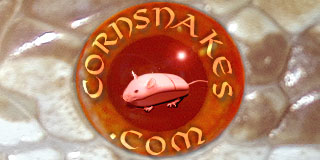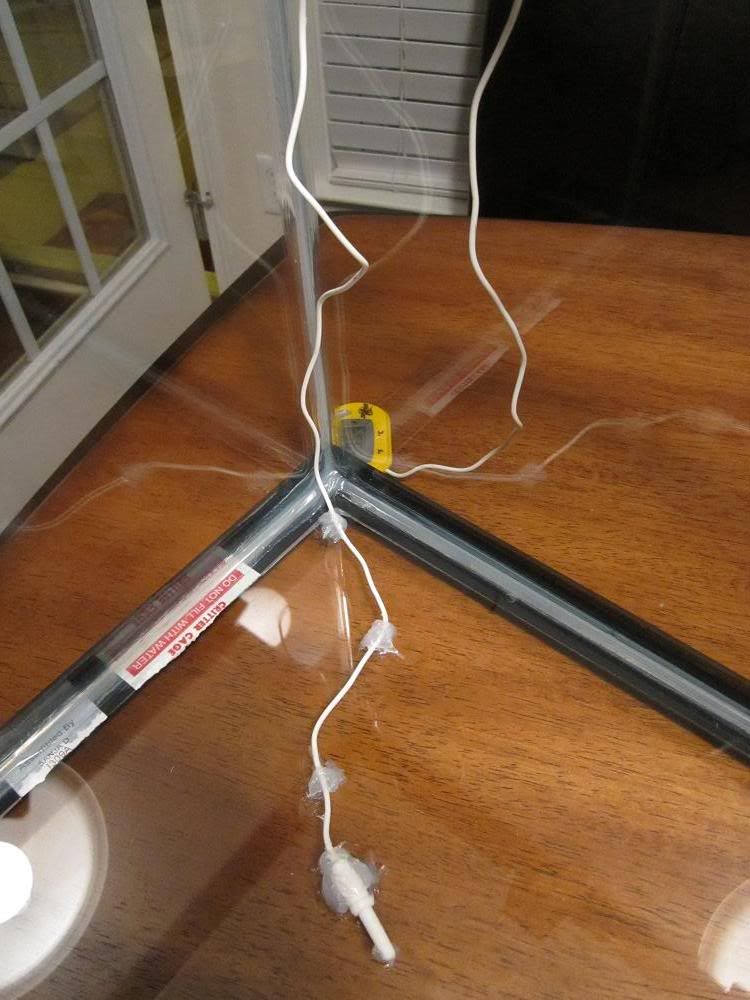It has taken me a week to be able to sit down and type this post. I have lurked here quite a bit in the past 2 months but sadly, this is my first post. One week ago our baby cornsnake, Copper, died and I'm desperate to find some answers as to why this has happened. I am going to try give the most important info and list anything that I think might have been questionable. I know that sometimes babies just die but I really want some opinions before even trying again.
We bought the snake as a birthday gift for my 11 year old. This was not a spur of the moment purchase, he has been waiting years for this. Prior to the actual purchase I did a lot of research online and in books. This was the first time that I ever had a snake so I was kind of nervous about it. We determined that a cornsnake was the best choice for us. We bought the snake from Petco which in hindsight may not have been the best decision. I've notice a few negative remarks about Petco in this forum. He seemed to be healthy and very sociable. I'm not sure how old he was but abut 14 inches long.
We had him in a 29 gallon aquarium, they(Petco) said we could put him in the big tank right away. I had been going to keep him in something smaller at first. He seemed very content and didn't hide very much, very active and exploring his environment. For heat, we had a heat pad under one end, heat lamp over the same end and a black light at night at same end. 85 degrees on the warm end and 75 on the cool end. About 10 degrees less at night. Water on the cool end from bottle I let sit open. 3 hides, aspen bedding.
For feeding I was giving him a pink every 5 days. He always seemed to eat very well until his feeding on Jan. 25th. He turned away from the pink twice before eating it. He seemed fine until the next feeding when he completely refused. I tried again the next morning and evening and he still refused. He seemed active. I searched on here and determined to wait a couple of days before trying again. I'm not sure if he also had stopped drinking, he may have felt a bit dry. I had him out on Feb. 3rd and he seemed listless, kind of a loose grip on my hand. He still wasn't hiding and seemed to be moving around in his tank. The next morning I saw him moving around and climbing. That night when I went to try and feed him, he was dead in his hide.
The only other thing that I can think that might have been off was the humidity in his tank was very low. He shed around the end of Dec. and it did not come off in one piece. I searched on this forum and did everything that was mentioned. Luke warm baths, misting his tank once a day, moist moss in one of his hides and used shedding aid on him. I know that most of the skin was off but there might have been a little patch in the throat area yet. The tank was so dry that I continued to mist once a day and keep the moist moss in the one hide.
This all that I can think of, I hope someone can give me some insight as to what could have possibly gone wrong. It seemed to have happened so fast. The whole family was so absolutely in love with this little guy! Even my husband who is not a huge animal lover wants to try again. I decided that we need to wait for a while and talk to more people. I will also try to contact the herp. club in our area. Thanks to anyone who can help!
We bought the snake as a birthday gift for my 11 year old. This was not a spur of the moment purchase, he has been waiting years for this. Prior to the actual purchase I did a lot of research online and in books. This was the first time that I ever had a snake so I was kind of nervous about it. We determined that a cornsnake was the best choice for us. We bought the snake from Petco which in hindsight may not have been the best decision. I've notice a few negative remarks about Petco in this forum. He seemed to be healthy and very sociable. I'm not sure how old he was but abut 14 inches long.
We had him in a 29 gallon aquarium, they(Petco) said we could put him in the big tank right away. I had been going to keep him in something smaller at first. He seemed very content and didn't hide very much, very active and exploring his environment. For heat, we had a heat pad under one end, heat lamp over the same end and a black light at night at same end. 85 degrees on the warm end and 75 on the cool end. About 10 degrees less at night. Water on the cool end from bottle I let sit open. 3 hides, aspen bedding.
For feeding I was giving him a pink every 5 days. He always seemed to eat very well until his feeding on Jan. 25th. He turned away from the pink twice before eating it. He seemed fine until the next feeding when he completely refused. I tried again the next morning and evening and he still refused. He seemed active. I searched on here and determined to wait a couple of days before trying again. I'm not sure if he also had stopped drinking, he may have felt a bit dry. I had him out on Feb. 3rd and he seemed listless, kind of a loose grip on my hand. He still wasn't hiding and seemed to be moving around in his tank. The next morning I saw him moving around and climbing. That night when I went to try and feed him, he was dead in his hide.
The only other thing that I can think that might have been off was the humidity in his tank was very low. He shed around the end of Dec. and it did not come off in one piece. I searched on this forum and did everything that was mentioned. Luke warm baths, misting his tank once a day, moist moss in one of his hides and used shedding aid on him. I know that most of the skin was off but there might have been a little patch in the throat area yet. The tank was so dry that I continued to mist once a day and keep the moist moss in the one hide.
This all that I can think of, I hope someone can give me some insight as to what could have possibly gone wrong. It seemed to have happened so fast. The whole family was so absolutely in love with this little guy! Even my husband who is not a huge animal lover wants to try again. I decided that we need to wait for a while and talk to more people. I will also try to contact the herp. club in our area. Thanks to anyone who can help!

